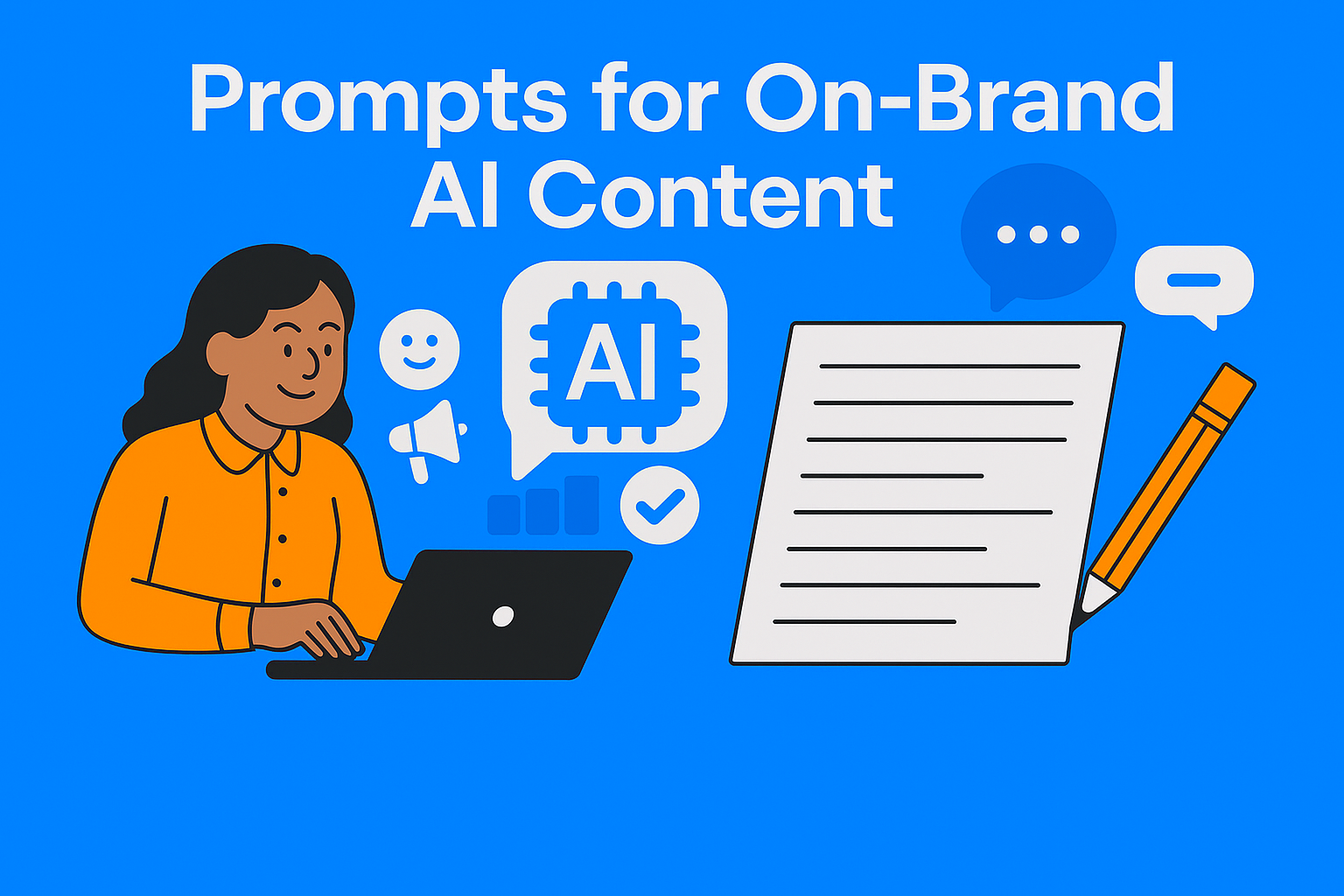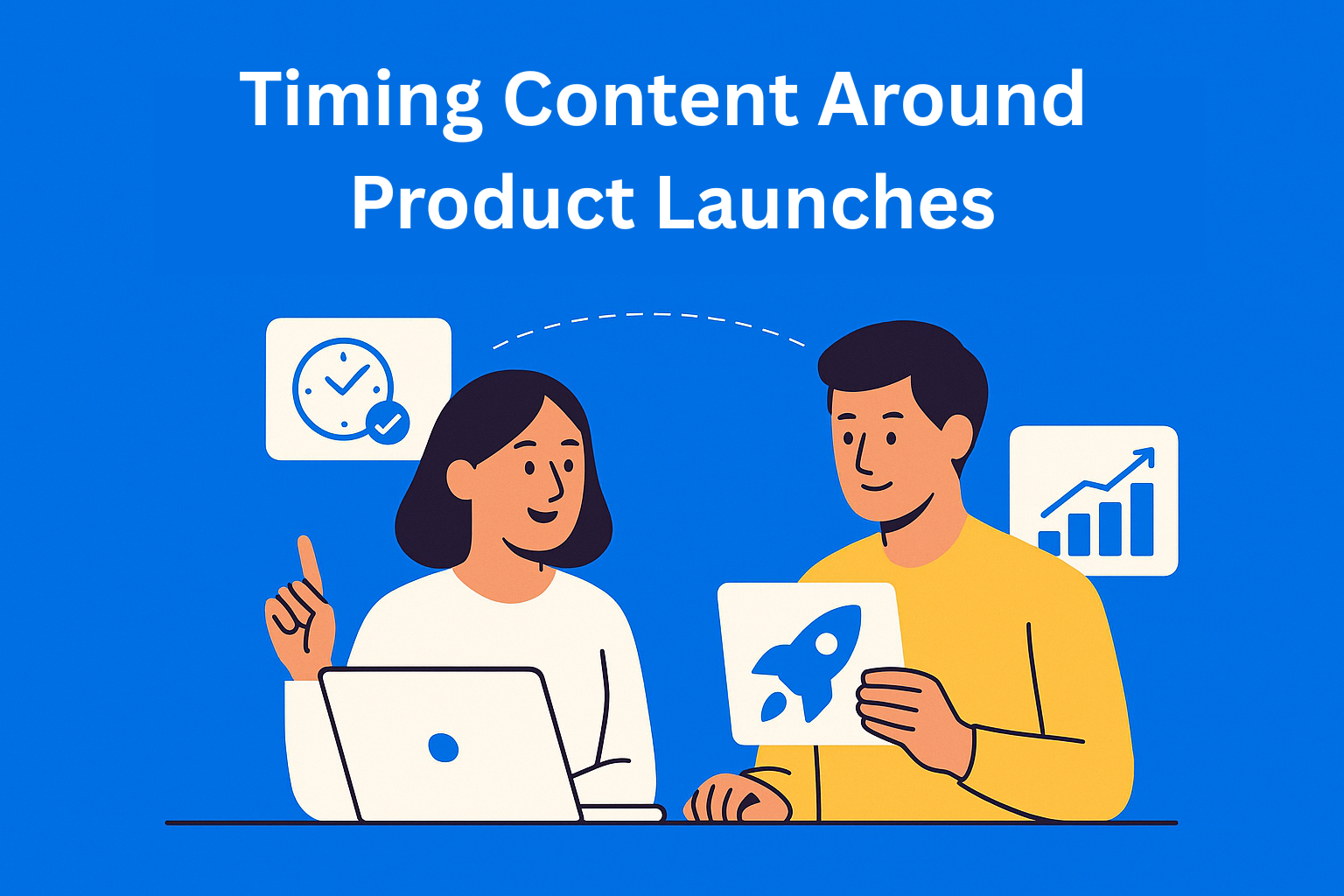Prompts for On-Brand AI Content That Converts
If you're using AI to write, the key is in a good prompt. Learn how to craft inputs that lead to content that sounds just like your brand-clear, engaging, and authentic.

Writing good prompts for AI isn't just some geeky thing. If you're using tools like ChatGPT to create content, you'll quickly realize that even the best AI can write something completely meaningless... if you don't give it a good input.
Think of a prompt as instructions you're giving to a very smart assistant. If you're vague, you'll get a mess. If you're clear, the result can be a great text that literally "sounds like you."
In this post, we'll go through how to write prompts that lead to content that’s truly "on-brand"-meaning: in tone, style, and message that fits your brand.
Key Takeaways
- Good prompts lead to AI-generated content that actually sounds like your brand.
- "On-brand" means staying consistent in tone, message, and audience alignment across platforms.
- Prompts should include tone, audience, format, content goal, and writing style.
- Vague prompts result in generic content - clear prompts create unique, usable results.
- Create reusable prompt templates for blogs, social captions, emails, and more.
- Test different prompt versions to see which ones give the best output and engagement.
- Build a prompt library that aligns with your brand voice guidelines.
- AI is a tool - the more intentional your instructions, the better the content outcome.
What Does "On-Brand" Mean?
When we say a piece of content is "on-brand," we mean that it is:
- In your tone (serious, friendly, humorous...)
- Written for your audience (e.g., teens vs. B2B clients)
- Aligned with your values and messages
For example, if you run a brand that promotes mental health and uses an empathetic tone, you wouldn't want AI to write a sarcastic post. That would be "off-brand."
Consistency is key here. People recognize and trust brands that sound the same on their website, Instagram, newsletter...
Why Are Prompts So Important?
AI works like this: what you give it-is what you get back. If you just say "Write a post about marketing," it’ll probably write something you've seen 100 times.
But if you say: "Write a post about how small businesses can use TikTok for promotion, in a relaxed and motivating tone, for an audience aged 20 to 30," the result will be way better.
In short: Bad prompt = generic content
Good prompt = content that sounds like you wrote it
Key Elements of a Good Prompt
Here’s what every good prompt should include:
1. Tone of voice
Do you want the text to sound friendly, professional, expert, relaxed?
2. Audience
Who are you talking to? Students, parents, marketing managers, CEOs?
3. Format
Is this going to be a blog, an Instagram caption, LinkedIn post, email?
4. Content goal
Do you want to inform, motivate, sell something, educate?
5. Style and guidelines
Do you use shorter sentences? Emojis? Do you speak directly to the reader?
Example:
❌ Bad prompt: "Write a blog about SEO"
✅ Good prompt: "Write a 1000-word blog post about SEO strategies for small e-commerce businesses, in a friendly tone, using examples and practical tips."
How to Create Prompt Templates for Your Brand
Instead of starting from scratch every time, build a small library of prompts you use for different needs.
Example templates:
- Blog post: "Write a blog post of [number] words about [topic] for [target audience], in a [tone of voice], including [type of examples or data]."
- Instagram caption: "Write a short caption (up to 150 characters) for Instagram, in a [tone], about [occasion/topic], with a call to action."
- Newsletter intro: "Write a short and interesting intro for a newsletter about [topic], that motivates people to keep reading."
Link this with your brand guidelines (if you have them). If not, it’s worth creating them!
Real-Life Examples: Prompt Before and After
Example 1:
- ❌ Prompt: "Write a post about sustainable fashion"
- ❎ Output: The text was dull and too general, with no clear direction
- ✅ New prompt: "Write an Instagram post about how wearing second-hand clothes helps the planet. Keep the tone relaxed and fun, aimed at a younger audience (18–30 years old)."
Example 2:
- ❌ Prompt: "Write an email to users"
- ✅ New prompt: "Write a friendly and thankful email to users who have used our product in the past 6 months, as if you're talking to old friends."
In both cases, the new version of the prompt clearly guides AI toward more relevant, high-quality content.
Tools and Tips for Testing Prompts
No one writes a perfect prompt on the first try. So test:
- Try 2–3 variations of the same prompt
- Use tools like ChatGPT, Jasper, Notion AI
- Watch the results: what got more engagement? What reads better?
Remember: prompting is a skill that improves with practice.
Conclusion and Next Steps
If you're using AI to write, the prompt is your strongest tool. A precise, smart prompt leads to content that’s not only useful-but also perfectly reflects your brand.
So, next steps:
- Create 2-3 templates for the types of content you use most often
- Play with tones, audiences, and styles
- Test, tweak, and note what works
Soon your AI-written texts will start to sound like you wrote them yourself. And that’s the real goal!






